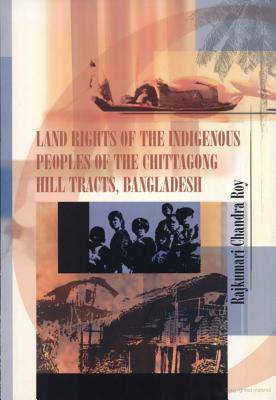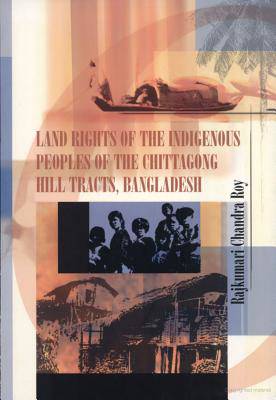
- Afhalen na 1 uur in een winkel met voorraad
- Gratis thuislevering in België
- Ruim aanbod met 7 miljoen producten
- Afhalen na 1 uur in een winkel met voorraad
- Gratis thuislevering in België
- Ruim aanbod met 7 miljoen producten
Land Rights of the Indigenous Peoples of the Chittagong Hill Tracts, Bangladesh
Rajkumari Chandra RoyOmschrijving
Little is know about the Chittagong Hill Tracts of Bangladesh (CHT), an area of approximately 5,089 square miles in southeastern Bangladesh. It is inhabited by indigenous peoples, including the Bawm, Sak, Chakma, Khumi Khyang, Marma, Mru, Lushai, Uchay (also called Mrung, Brong, Hill Tripura), Pankho, Tanchangya and Tripura (Tipra), numbering over half a million. Originally inhabited exclusively by indigenous peoples, the Hill Tracts has been impacted by national projects and programs with dire consequences.
This book describes the struggle of the indigenous peoples of the Chittagong Hill Tracts region to regain control over their ancestral land and resource rights. From sovereign nations to the limited autonomy of today, the report details the legal basis of the land rights of the indigenous peoples and the different tools employed by successive administrations to exploit their resources and divest them of their ancestral lands and territories.
The book argues that development programs need to be implemented in a culturally appropriate manner to be truly sustainable, and with the consent and participation of the peoples concerned. Otherwise, they only serve to push an already vulnerable people into greater impoverishment and hardship. The devastation wrought by large-scale dams and forestry policies cloaked as development programs is succinctly described in this report, as is the population transfer and militarization. The interaction of all these factors in the process of assimilation and integration is the background for this book, analyzed within the perspective of indigenous and national law, and complemented by international legal approaches. The book concludes with an updateon the developments since the signing of the Peace Accord between the Government of Bangladesh and the Jana Sanghati Samiti (JSS) on December 2, 1997.
Specificaties
Betrokkenen
- Auteur(s):
- Uitgeverij:
Inhoud
- Aantal bladzijden:
- 232
- Taal:
- Engels
- Reeks:
Eigenschappen
- Productcode (EAN):
- 9788790730291
- Verschijningsdatum:
- 1/09/2000
- Uitvoering:
- Paperback
- Formaat:
- Trade paperback (VS)
- Afmetingen:
- 167 mm x 242 mm
- Gewicht:
- 449 g

Alleen bij Standaard Boekhandel
Beoordelingen
We publiceren alleen reviews die voldoen aan de voorwaarden voor reviews. Bekijk onze voorwaarden voor reviews.












